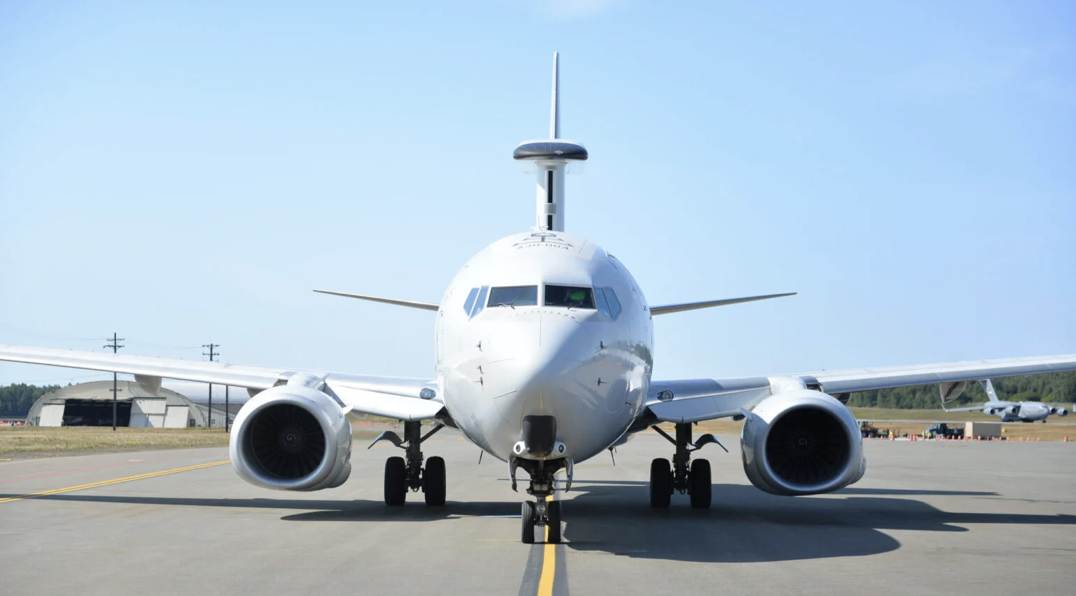Negotiations with the US Air Force over the cost of the E-7 Wedgetail are still ongoing, a Boeing executive confirmed at the Singapore Airshow.
By COLIN CLARK
SINGAPORE AIRSHOW — Using a drone, artificial intelligence and autonomous systems, Boeing’s new method of inspecting airplanes for damage and structural issues is allowing the aerospace giant to cut inspection of large military aircraft down from a days long process to just a few hours, a company executive told reporters here today.
The drone flies across the aircraft’s surfaces, gathering huge amounts of data. The data is analyzed for possible problems. And since the data is retained for each tail number, Boeing and the Air Force can compare the data between inspections to do a version of change detection, Torbjorn Sjogren, vice president of government services for Boeing Defense, said at a briefing today.
“You can do a complete comparison that provides you a degree of insight we haven’t had before,” Sjogren said. Over repeated inspections of the same aircraft — and allowing for fleet-wide comparisons — “you’ll amortize it throughout the entire fleet; the ability to drill down aircraft by aircraft is significant.”
Boeing, working with Near Earth Autonomy, has assessed a C-17 and the giant C-5. Sjogren noted that crew would normally have to work six stories up to safely inspect a Lockheed Martin-built C-5, an inspection that traditionally takes at least a few hours. Instead, he claimed, a C-5 inspection in late January took just 10 minutes.
The drone’s sensor is more accurate than the human eye and, since data can be compared over time, the ability to spot new problems or demonstrate that a fix is working should be much improved. The drone generates 60,000 data points per second during an inspection, according to the Boeing executive.
In other news, Boeing has not yet reached agreement with the Air Force on a price for two prototype E-7 Wedgetails, Bernd Peters, VP for Boeing Defense’s business development and strategy, confirmed when Breaking Defense asked for an update.
“We continue to support discussions with the United States Air Force on the pricing for the platform. We’re always trying to balance affordability with the capability,” Peters said.
Air Force Secretary Frank Kendall flagged the impasse on Feb. 13, telling reporters that the service is “having a hard time with [getting] a price agreement with Boeing” due to changes the US is requesting to the E-7 design. The Air Force awarded Boeing a deal worth up to $1.2 billion contract to kick off E-7 production a year ago. It was made as an undefinitized contract action (UCA), meaning that early work could start while the two parties ironed out specifics like terms and prices. The Air Force hopes to eventually buy a fleet of 26 Wedgetails by 2032.
Asked about what the changes to the Wedgetail are that are causing the hold up, Peters said “I’m not necessarily at liberty to comment on that but we are looking at all things to make sure we’re driving affordability into the platform.”
SOURCE ARTICLE: https://breakingdefense.com/2024/02/boeing-turns-to-drone-inspections-of-military-planes-still-negotiating-wedgetail-price-with-us/
